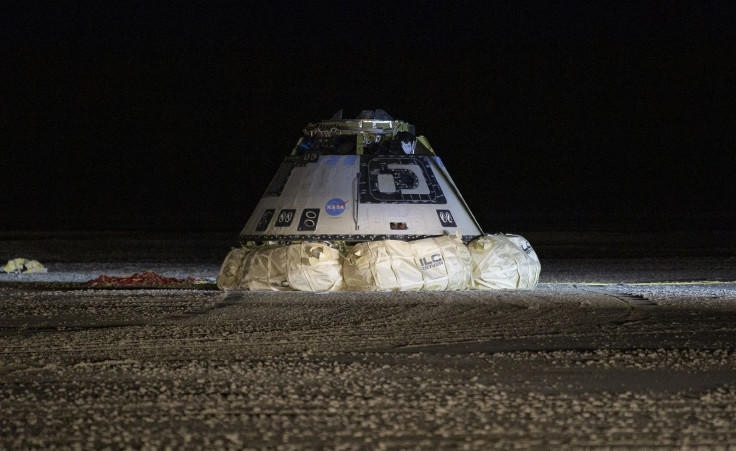NASA, Boeing To Investigate Starliner Orbital Flight Test Anomalies
KEY POINTS
- Boeing Starlier experienced a glitch that shortened its Orbital flight Test last December
- NASA and Boeing are creating a team to investigate the anomalies
- NASA is analysing the data from Starliner
- The investigations will help determine if there is a need for another uncrewed flght test
After the Starliner's Orbital Flight Test last Dec. 20, NASA and Boeing are set to investigate the issues that occurred during the mission. It may take months before the team announces its assessment.
Investigation Team
In a tweet, NASA Administrator Jim Bridenstine delivered on a promise to keep people updated on the recent Starliner Orbital Flight Test.
As many people now know, the intention for the Orbital Flight Test late in 2019 was for the Starliner to dock at the International Space Station (ISS) but the mission was cut short due to a clock glitch that caused the spacecraft to use up its fuel way ahead of time.
In response, NASA and Boeing are now in the process of creating an investigation team that will assess and examine the main issues that occurred during the Orbital Flight Test. Specifically, they will search for exactly what caused the timer anomaly as well as any other possible issues, and provide corrective actions for future missions.
The investigation is expected to last for about two months.
Crewed Flight Test
At the same time, NASA will be evaluating the data received during the Orbital Flight Test to determine if there is still a need for another uncrewed mission before the crewed one that was initially scheduled for some time in mid-2020. In fact, NASA states that although the data from the uncrewed test is important to get NASA certification, it is not the only way to determine Starliner’s full capabilities.
“The uncrewed mission, including docking to the space station, became a part of the company’s contract with NASA. Although docking was planned, it may not have to be accomplished prior to the crew demonstration,” NASA said.
That said, Boeing needs NASA's approval to greenlight a crewed Starliner mission, and the ongoing investigations will certainly provide vital information that will determine whether Starliner will soon launch on its first crewed mission or if more work needs to be done.
For now, data from the spacecraft has been downloaded, and interior and exterior inspections of the spacecraft have been completed. NASA's assessment of the Starliner data may take weeks to complete.
Commercial Crew Program
Boeing and SpaceX are the two companies developing the next generation of spacecraft that will carry astronauts to and from the International Space Station. Both companies are now close to the goal, with Boeing's Starliner already done with the uncrewed test and SpaceX's Crew Dragon set to undergo a crucial safety test later in January.
Should things go smoothly for either company, 2020 may just be the year when American astronauts will launch from American soil for the first time in nearly a decade.

© Copyright IBTimes 2024. All rights reserved.












